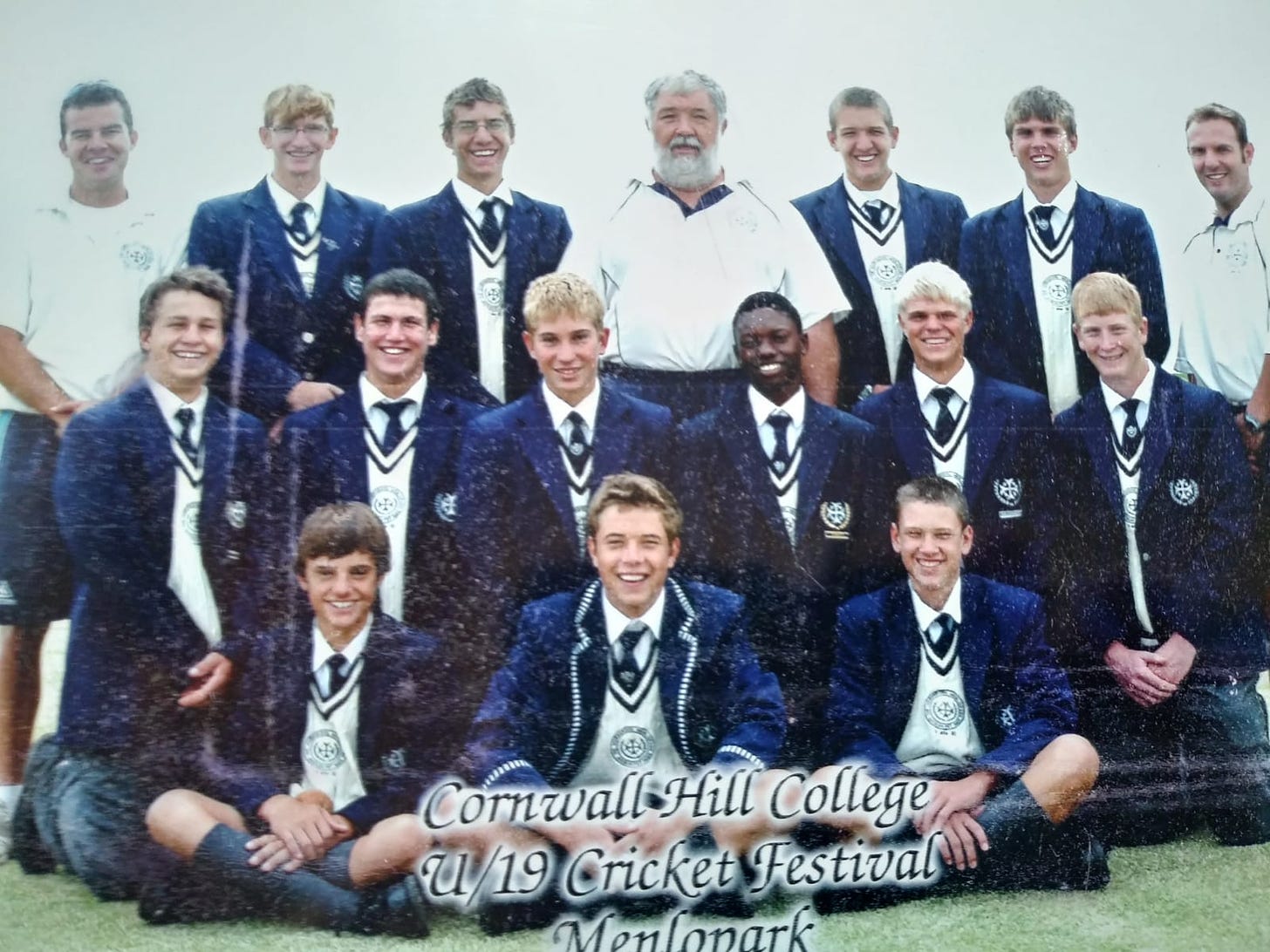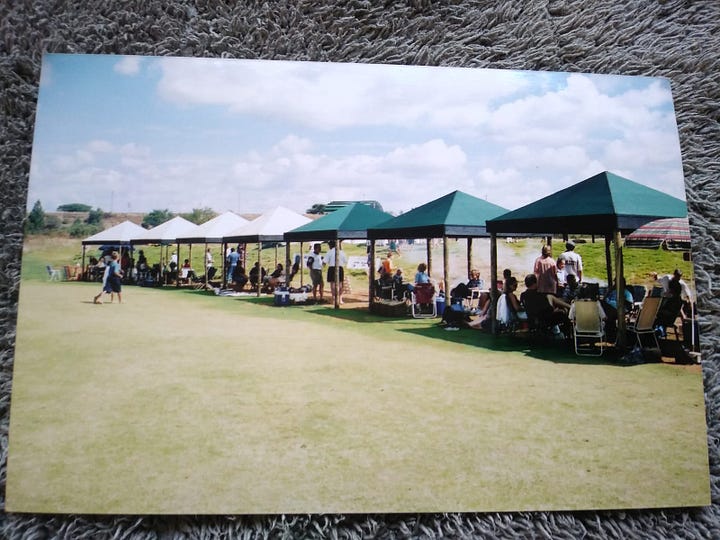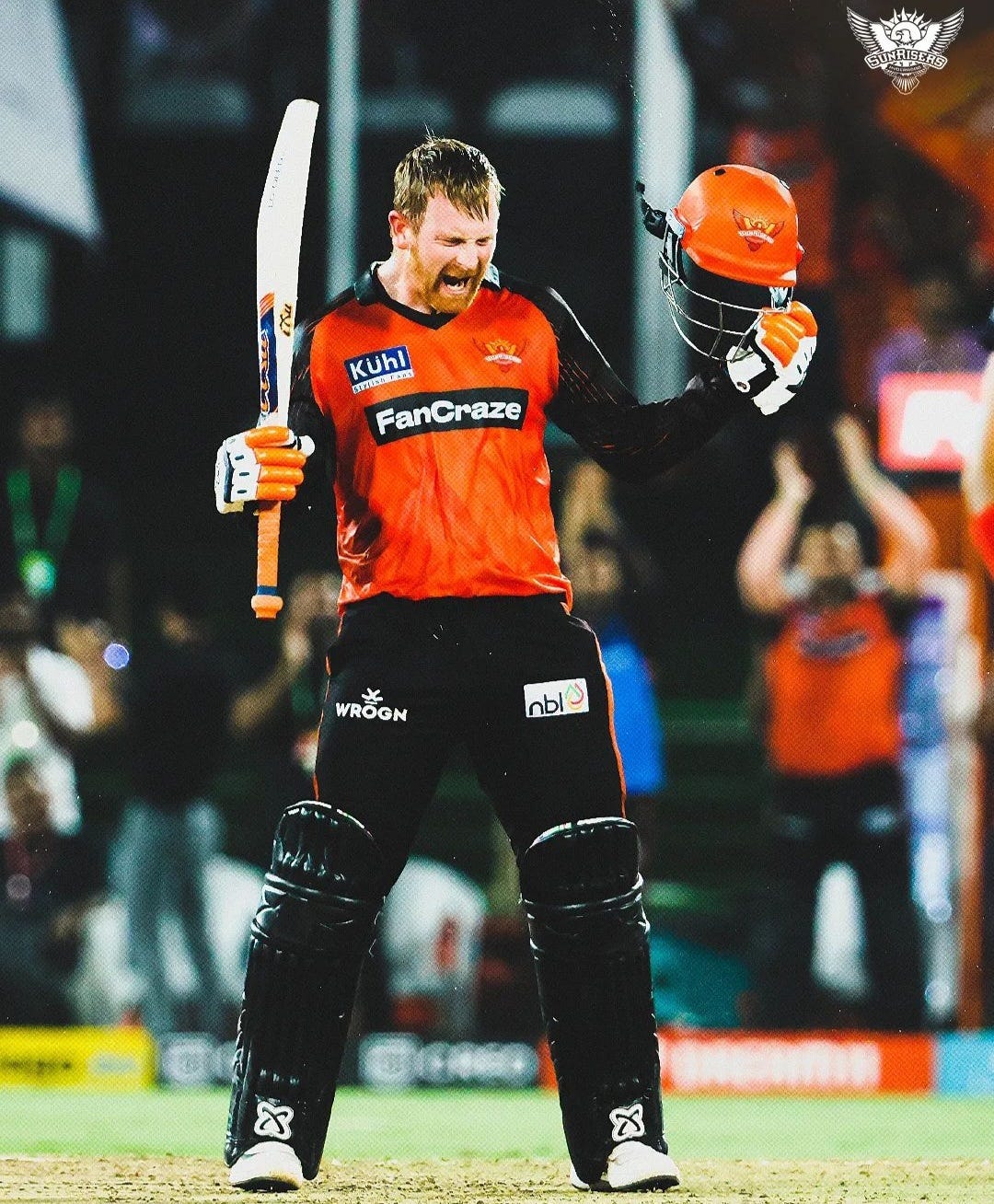Pretoria's Pollock
The foundations of Heinrich Klaasen the cricketer were laid at Roodeplaat Dam, on the outskirts of Pretoria
“I want to be part of a group that is that you can classify as one of the best or at least compete against the best in the world. But the majority of the time, it's just for me too,” Heinrich Klaasen on what drives him as a player.
When you mention Heinrich Klaasen, the last thing that typically comes to my mind is him playing red-ball cricket. That is despite me knowing the fact that his first outing with the Proteas was as a reserve wicket-keeper with Rudi Second when South Africa played against New Zealand in 2017. In fact, Klaasen loved red ball cricket so much that on more than one occasion his first stop after landing from limited overs tours with the Proteas was joining the Titans in a four-day match.
One time, after an ODI tour with the Proteas, Klaasen ran from the airport to Supersport Park and arrived at tea time on the first day of a four-day match. He immediately changed into his whites and took to the field. Klaasen was always been on the fringes of the Test side. He never got a chance because Quinton de Kock enjoyed Test cricket too much to put down the gloves. de Kock even played through injury sometimes. Klaasen had to be content with jostling for the SA A slot with Dane Vilas.
When you mention Heinrich Klaasen, the first thing that typically comes to my mind is him in the Proteas' ODI pink kit. In his first Pink ODI, Klaasen carved five fours and a single six for an unbeaten 43 off 27. He lifted the Proteas to an unlikely win. The trophy he awarded for his player of the match innings that day sits among a few other trophies in his den.
“The next day I had a look at what I had done, and that’s when I realized the enormity of what I had done. When I go through bad patches, I go back to that innings just to remind myself what I can do, because that was one inning that I really expressed myself,” says Klaasen.
On Thursday 18 May 2023, Klaasen created another indelible memory that some cricket fans will forever associate with him. He roared to a sensational maiden IPL century with a six. In IPL 2023, Klaasen dispelled one of the assumed truths regarding South African batters; that they cannot play spin. He was masterful as he took down the spinners.
This newsletter is completely reader-supported. If you’re willing and able, please consider supporting it in one of two ways, leaving a tip or becoming a Patreon. Thank you so much for your time and investment!

When you mention Heinrich Klaasen, the first thing that comes to Etienne Birkenstock's mind is the four-word message Klaasen sent him on February 7 2018. "Thank you, Oom Et," it read. They were more than just four words to Birkenstock. By Klaasen standards, it was a paragraph of heartfelt gratitude. Klaasen in adulthood is not so much different from the younger version. He was never a big talker.
"We lived on the same side of the world far from school, so it made sense to have a lift club to school. Heini was a quiet man, he didn't speak much," says Uwe Birkenstock. The two attended Menlo Park High School together and were teammates for the SA Universities cricket team.
Less talking and more listening has always been Klaasen's default setting. When he does speak, it is in a laconic manner. His lazy accent belies a sharp cricketing brain, one that Pierre de Bruyn and Chris van Noordwyk put to good use when they asked him to lead the TUKS team. One that Titans legends that include Albie Morkel and Henry Davids leaned on.
Etienne Birkenstock, or Oom Et, as youngsters have called him for decades, first met Heinrich Klaasen when he was 10 years old. Despite a teacher telling him that cricket would not get him far in life. For an individual who says, “I am doing the job that I enjoy and at least I don't have to sit behind computers all-day.” It is unlikely that listening to the teacher would have been the right move.
Disclaimer: Klaasen is no luddite, computer games are one of his beloved downtime activities.
Fortunately, young Klaasen believed in himself too much to pay attention to the teacher. His mother also believed in his abilities, and she approached Birkenstock to see if he was willing to take her son on as one of his students. Birkenstock was never one to turn away kids who loved the game.
But, Klaasen didn’t just love the game, he was a precocious talent. "From a very young age, he showed promise of becoming a star," says Birkenstock.
The first thing Birkenstock noticed about Klaasen in the nets was his outstanding hand-eye coordination and exceptional ability to pick up length really early. It was inconceivable that anyone would look at a young Heinrich Klaasen and think that his cricket dream was a stream that died in itself.
That was the beginning of a nine-year relationship between Klaasen and Birkenstock. Besides Willowick Academy and Willowick Cricket Club, Birkenstock was also Klaasen's head coach at Menlo Park High from 2003. By the time both were done at Menlo Park, the school was no longer a B-league school. It had evolved into one of the top eight cricketing schools in South Africa.
Willowick Cricket Academy opened its doors during the 1999/2000 season. Rassie van der Dussen, Roelof van Merwe and Duane Olivier are among the players that pilgrimed to Roodeplaat Dam to develop their skills at one of Pretoria's cricketing nurseries.
When Klaasen enrolled in 2001, Willowick Academy was a dustbowl. There was barely any grass on the field or any of the pitches. Birkenstock was bootstrapping with limited resources. It was less of a spiffy prestigious centre and more of a rough-and-ready academy. "Willowick was in the bush, we had to roll our own wickets, cut the grass and paint everything," says Heinrich Klaasen.


Heinrich Klaasen is driven to compete with the best and to be considered among the best players. It is also how he makes a living. But, cricket is more than just a sport to Klaasen, his motivation to be the best player he can be also comes from a personal link between him and the sport. Klaasen was born to a family of sports lovers who introduced him to sports and shared their passion with him. He was decent but not exceptional at tennis, played rugby until he broke his clavicle, and found his niche in cricket.
Besides a platform to express himself, cricket offered him more. As a youngster, it was a vehicle for building friendships. When he went through rough patches in his life, cricket provided a refuge, and when he needed one, cricket provided an escape from life. As a youth, Willowick was Klaasen’s home away from home.
On most days, Klaasen helped out at Willowick after school. On Wednesdays, he helped prepare the wicket. Birkenstock believed that after playing cricket for a little while, the player thinks they know the game, only to discover that there is more to learn when they get into coaching. However, one becomes a student of the game when they learn how to prepare pitches. He always invited his students to learn about pitch preparation. Klaasen was one of those that took up the invitation.
"He was was like a sponge soaking up everything he could learn. I showed him how a pitch - and the bounce of a ball on it - could change after few hours of sun on it, and how it also changes from one day to the next," says Birkenstock.
At Menlo Park, Klaasen answered to Pollock. His ginger hair reminded many people of Shaun Pollock. The one Pollock he did resemble when it came to the game was Shaun Pollock's uncle, Graeme. Klaasen and the older Pollock loved batting in equal measure. Break periods at Menlo Park were spent playing cricket with a squash ball and a little bat that was broken in half. Klaasen annoyed a lot of his mates by often batting through the 30-minute break. They just couldn't get him out.
At Willowick, Klaasen and his mates often prepared good batting wickets because they wanted to bat for long periods and score buckets of runs. "But two of my best friends were spinners and I was a wicket-keeper, so we often made it less seamer-friendly and more spin-friendly. We always had like four or five spinners in our team," says Klaasen.
If Klaasen learned how to play spin by doctoring pitches to favour spin, he learned how to deal with high pace by playing against adults. Birkenstock fast-tracked his more precocious students, at 10 Klaasen was playing against 12-year-olds and at 13 he was playing club cricket against adults. Not once did Birkenstock detect fear in Klaasen when he faced express pace from older, bigger and stronger players. Klaasen played with the same freedom he played against his peers.
The one time Birkenstock detected fear in Klaasen was when they visited Kruger National Park during a schools cricket tournament in Nelspruit. Birkenstock and the team were admiring three buffalo through the windows of their small school bus. Suddenly, a herd of about 200 or 300 buffalo was crossing the road, passing close to the tiny school bus, the size of a taxi*. Silence fell up the school bus, and the sound of heavy buffalo hoofs filled the air. Then a little voice spoke up, 'Go, please go, Oom Et.' It was Heinrich Klaasen.
“He was really shaken," says Birkenstock. “I watched Heinrich play against hostile quick bowlers, but not once did I see him as shaken as he was that day. It takes a herd of buffalo to shake the man, not a bowler."
*To none South African readers, taxi in this context refers to 15 or 18-seater vehicles/mini buses. Not taxi as in taxi cab.
If you found this interesting, please share it:
You can support Stumped! by leaving a tip:
Thanks for reading. Until next time… - CS







This was beautifully penned down. Thank you for this. I see myself in Heinrich Klaasen. I hope he does good in his career and takes S.A. to greater pinnacles.